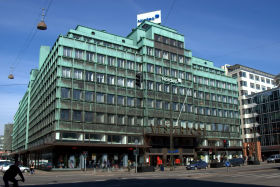Analytics, Economics, EU – Baltic States, GDP, Markets and Companies
International Internet Magazine. Baltic States news & analytics
Friday, 26.04.2024, 20:05
Nordea expects Latvia to be fastest-growing Baltic economy in 2017
 Print version
Print version |
|---|
Nordea last March forecast 3% growth for both Lithuania and Latvia and 2.5% for Estonia in 2017.
In the latest report, the bank expects Latvia to remain the region's fastest-growing economy in 2018 with a projected 3.8% growth rate, compared with 3.5% for Lithuania and 2.9% for Estonia.
Lithuania is expected to post the highest GDP growth rate in the region in 2019, at 3%. Growth in both Latvia and Estonia is forecast to slow to 2.8%.
Average annual inflation in Lithuania is forecast to reach 3.8% this year before decelerating to 3.4% in 2018 and easing further to 2.5% in 2019.
Latvia is expected to record 3% inflation for 2017, 3.9% for 2018 and 2.8% for 2019. Estonia's inflation is projected at 3.3%, 2.5% and 2.4%, respectively.
"A broad-based recovery has set in after a 4.4% growth in GDP in the first quarter with the outlook for exports and investment lifted by foreign demand and a kickstart to infrastructure spending. Exports of both goods and services are growing," Tonu Palm, chief economist at Nordea, said in the bank's economic outlook.
"Consumption got off to an exceptionally weak start at the beginning of the year, growing 0.7% on year in the first quarter, and was restrained by a strong rise in inflation. The inflation gap vis-a-vis the eurozone average has temporarily shot to above two%age points," Palm said, adding that labor demand and non-taxable income rises coupled with moderating inflation will support consumption next year.
In the first six months of the year, retail sales in the eurozone grew similarly to Estonia by 2.2%, but in Estonia retail turnover growth has increased at double the speed of the eurozone, growing 7.3%. Export of goods and services increased by 8% in the second quarter.








 «The Baltic Course» Is Sold and Stays in Business!
«The Baltic Course» Is Sold and Stays in Business!

